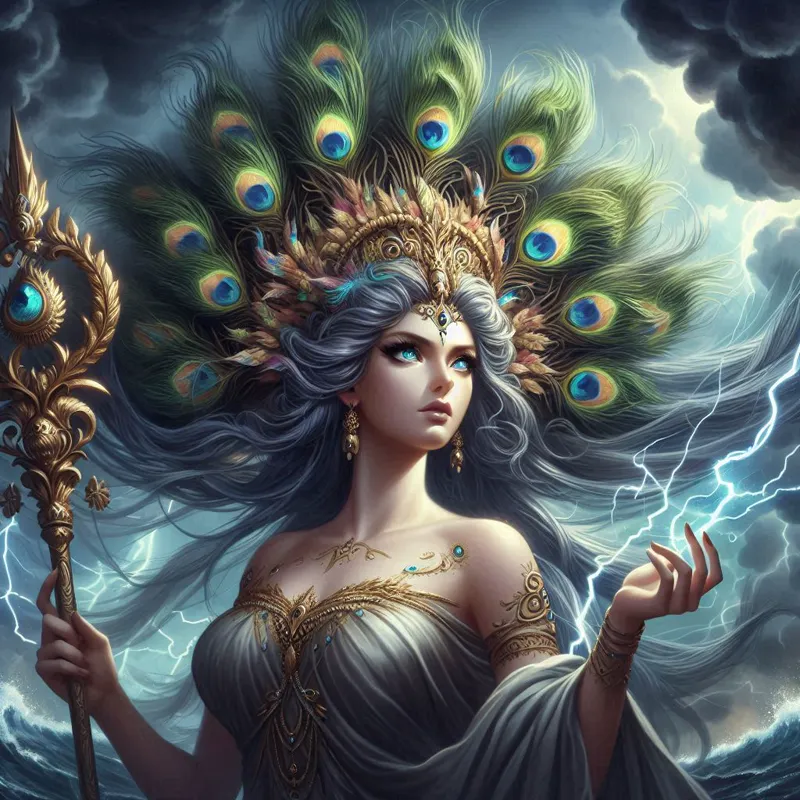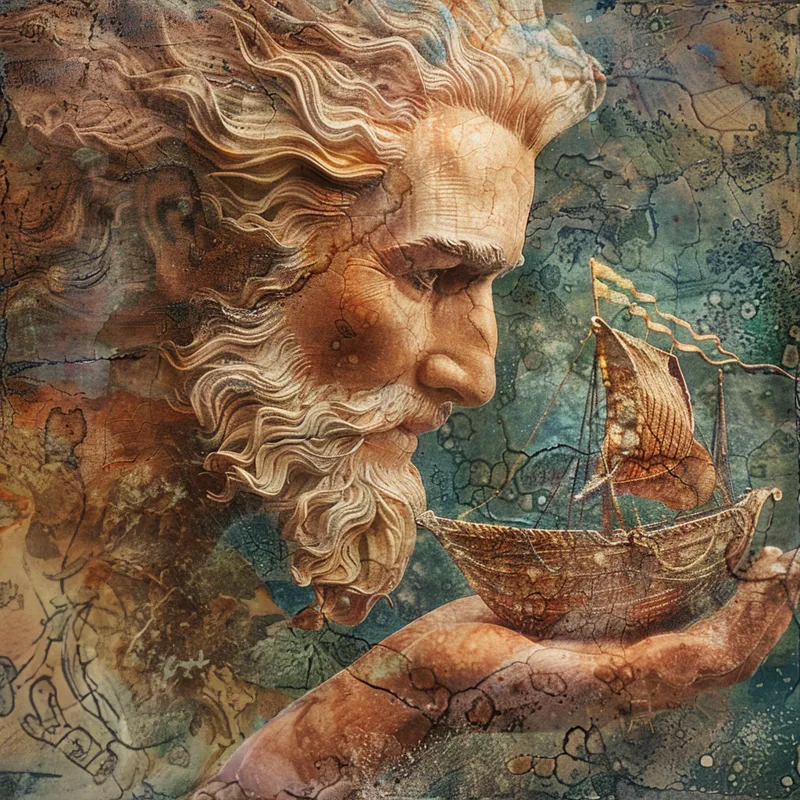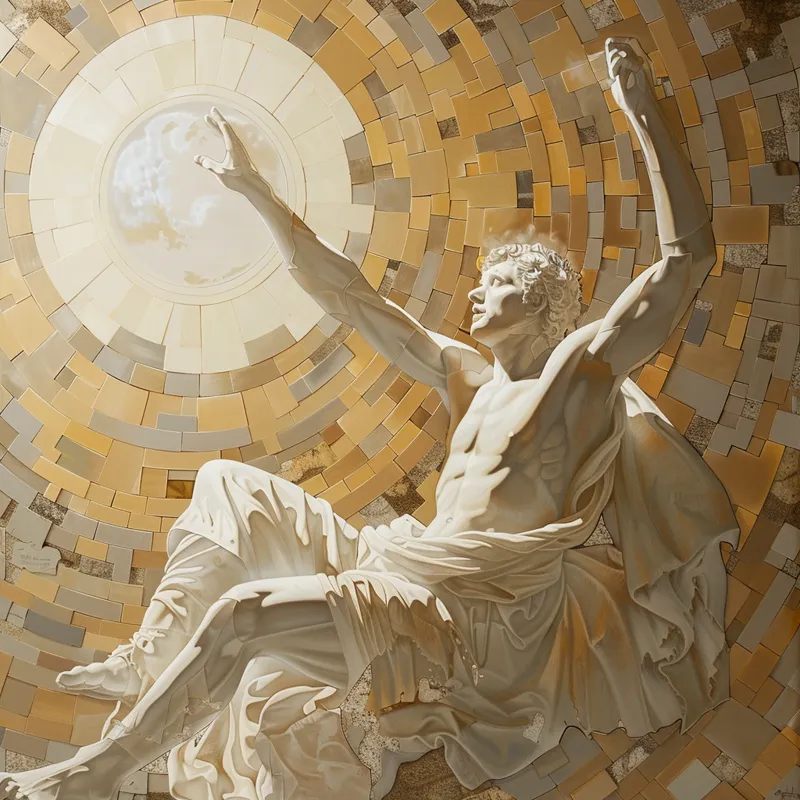
With the stars in our eyes
Aphrodite, the ancient Greek goddess of love, beauty, pleasure, and procreation, stands as one of the most venerated and intriguing deities in Greek mythology. Her origins and stories encapsulate the complexity of human emotions, from the heights of passionate love to the depths of jealousy.
Aphrodite's influence extended beyond the confines of Mount Olympus, deeply embedding itself in the cultural and religious fabric of ancient Greek society, and her legacy continues to captivate the modern imagination.
Origins

Heart of a supernova
Aphrodite's birth is a subject of captivating myths, with the most renowned tale describing her emergence from the foam ('aphros' in Greek) of the sea. This extraordinary birth occurred when Cronus severed Uranus's genitals and cast them into the sea, symbolizing a union of the sky and the ocean. This dramatic origin story underscores her connection to the primal forces of life and the natural world, weaving her into the very fabric of creation and fertility.

All worlds have the same sky
Another version suggests Aphrodite was the daughter of Zeus and Dione, a Titaness, highlighting the intricate web of divine relationships in Greek mythology. This lineage positions her among the Olympian gods, emphasizing her importance and power. Regardless of her origins, Aphrodite's enchanting beauty and divine nature were universally acknowledged, making her an object of veneration and fear among gods and mortals alike.

Born in chaos
Attributes and Symbols

Edge of a new world
Aphrodite's attributes and symbols reflect her dominion over love and beauty. The dove, swan, and sparrow were sacred to her, each bird representing different aspects of love and the gentle allure of her presence. The myrtle wreath, rose, and apple were also closely associated with Aphrodite, symbolizing her sensual and fertile nature.

An immortal soul is...
Her famed girdle, known to bestow irresistible attraction upon the wearer, highlights her power to ignite desire and passion. Aphrodite's connection to the sea is symbolized by the shell, often depicted in art as the vessel of her birth. These symbols not only represent her dominions but also serve as cultural touchstones, embodying ideals of beauty and love that transcended the mythological realm and influenced artistic and literary works throughout history.

...towards the sun
Worship and Cults
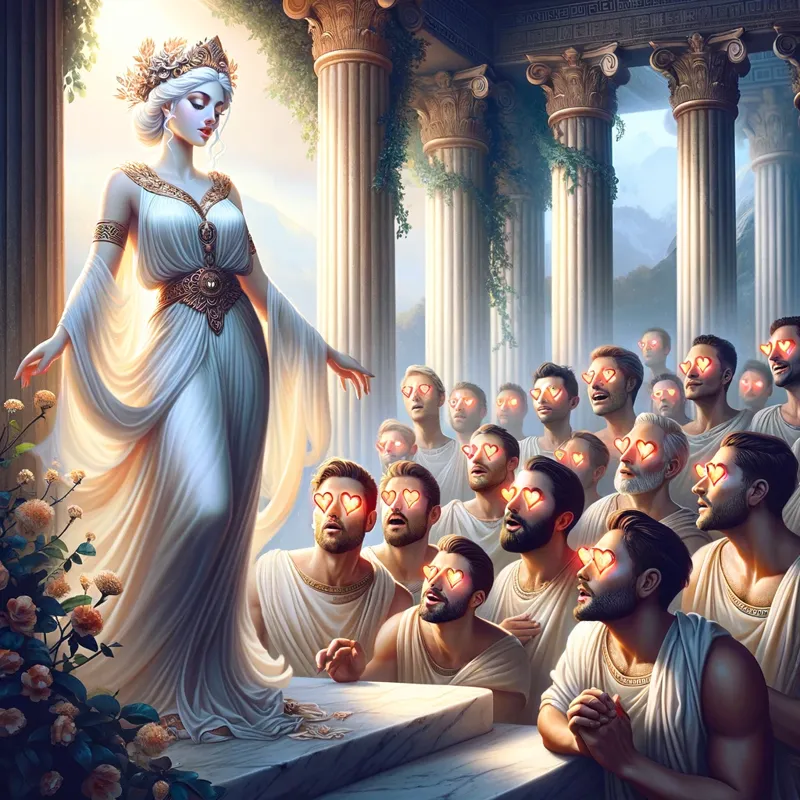
Blinded by love
The worship of Aphrodite was widespread across the ancient Greek world, with numerous cities claiming her as their patroness. The most famous sanctuary was the Temple of Aphrodite at Paphos on Cyprus, where she was revered as Aphrodite Paphia. This center of worship attracted pilgrims from far and wide, drawn by the promise of divine favor in matters of the heart and fertility.
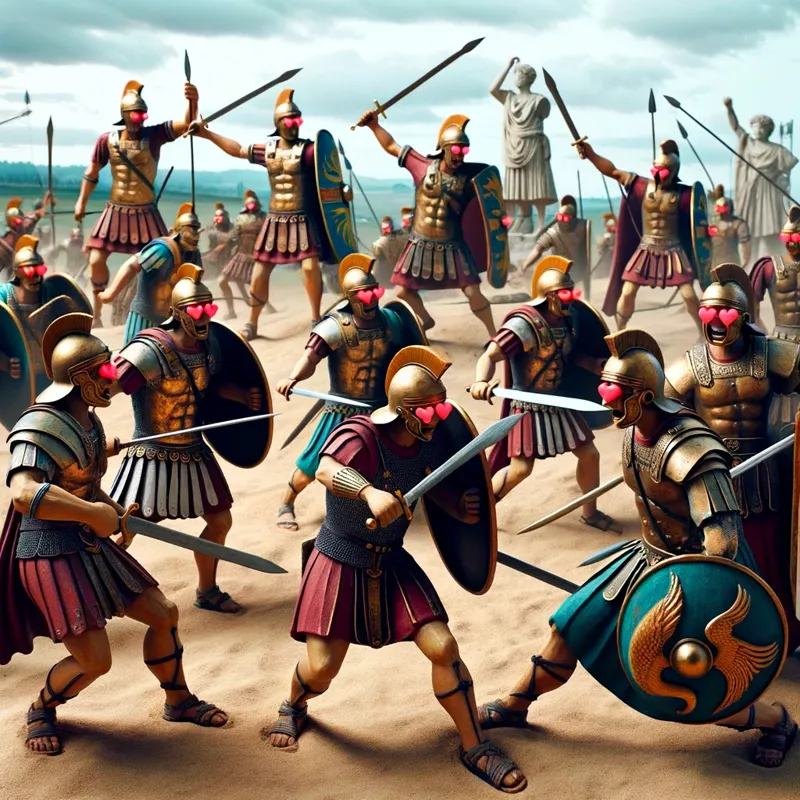
Love fools
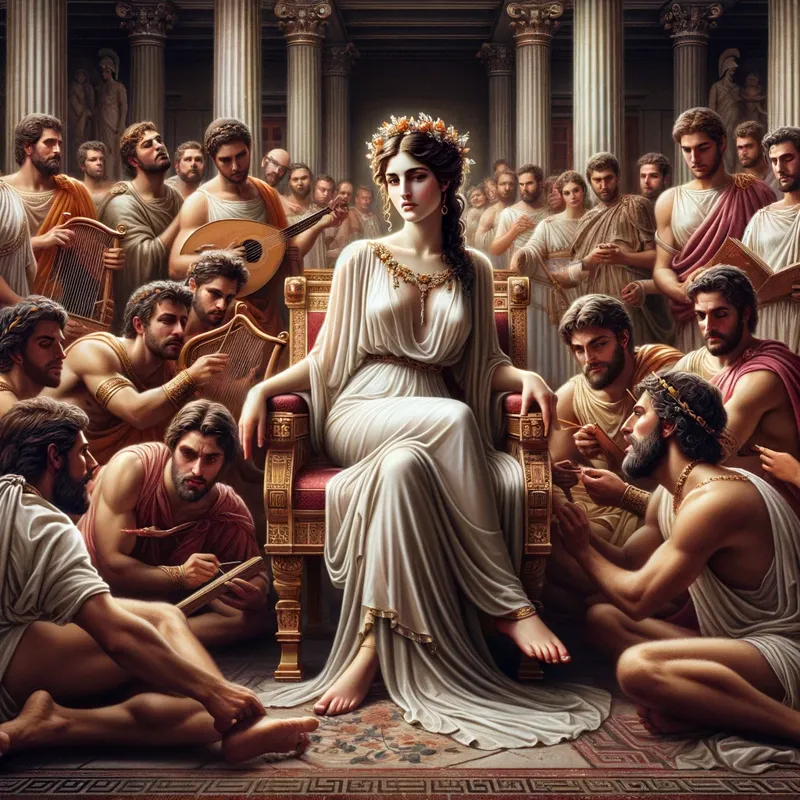
They kneel, but they should be standing
Festivals in her honor, such as the Aphrodisia, were marked by ceremonies and rituals celebrating beauty, love, and the generative powers of nature. These events not only paid homage to the goddess but also reinforced social bonds and cultural values, embedding her worship deeply within the communal and civic life of the Greek city-states.
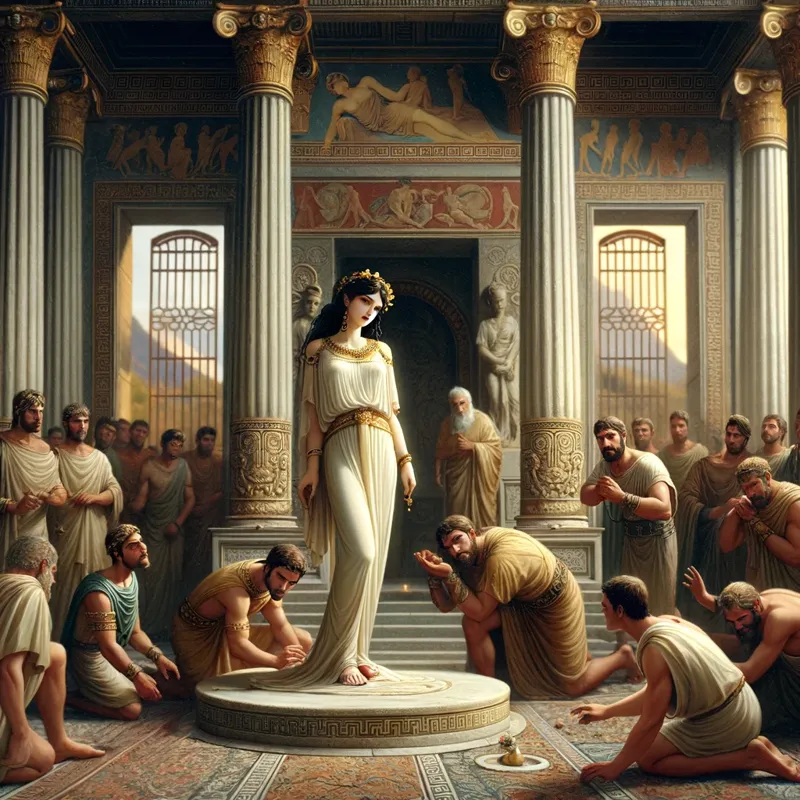
Why doesn't this work?
Myths and Stories

Like a wrecking ball
Aphrodite's myths are replete with tales of romance, intrigue, and divine machinations. One of the most famous stories involves her affair with Ares, the god of war, symbolizing the union of love and conflict. This affair, and the resulting tension with Hephaestus, her husband, offers insight into the complexities of love and the consequences of desire.

Unstoppable force

Mirror focus
Another significant myth is the Judgment of Paris, where Aphrodite, promising the most beautiful woman in the world to Paris, indirectly sparked the Trojan War. This story highlights her formidable influence over mortal affairs and the destructive potential of beauty and desire when wielded without foresight.

Controlled chaos
Influence on Art and Culture

Burning with life
Aphrodite's image has been immortalized in countless works of art, from ancient sculptures and vase paintings to Renaissance masterpieces. Perhaps the most iconic representation is the Venus de Milo, a statue that captures her timeless beauty and grace. These artistic depictions not only celebrate her physical allure but also convey the deep emotional and spiritual resonance of her myths.
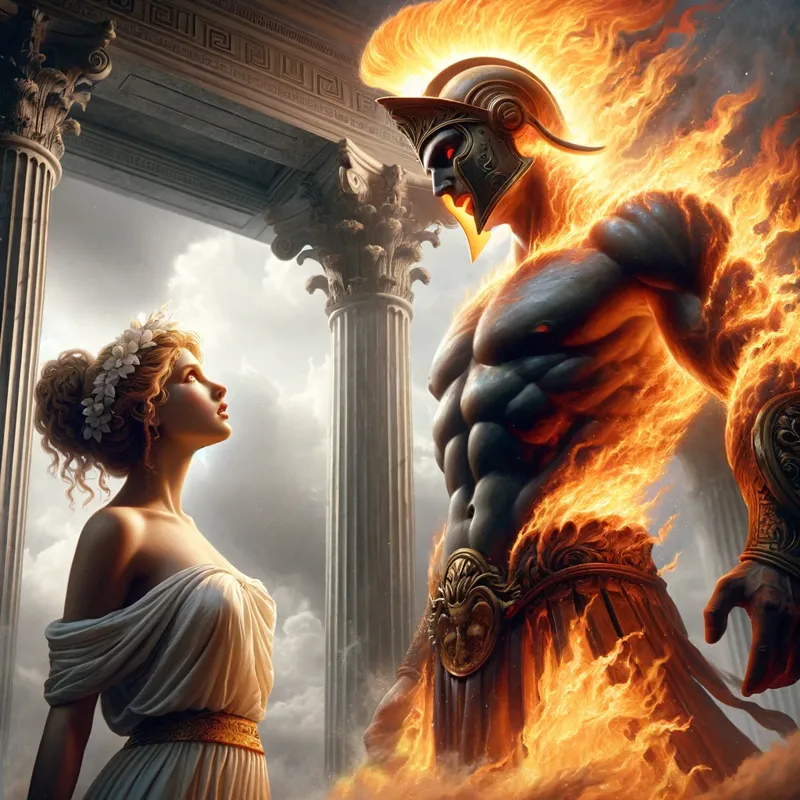
A dance with the devil
Beyond visual arts, Aphrodite's influence extends into literature and poetry, where she is often invoked as a muse of romantic love. Her narratives have inspired generations of artists and writers to explore the themes of beauty, desire, and the complexities of the human heart, making her an enduring symbol of love's power and peril.

We two monsters
Legacy and Modern Interpretation

Forgiveness... that feeling had vanished from our hearts
Aphrodite's legacy transcends the boundaries of ancient mythology, influencing modern culture in myriad ways. She lives on in the arts, psychology (notably in the concept of the 'Aphrodite complex'), and even astronomy, with the planet Venus named after her Roman counterpart. Her stories continue to serve as a lens through which we explore themes of love, beauty, and human relationships, reflecting on the timeless nature of these experiences.
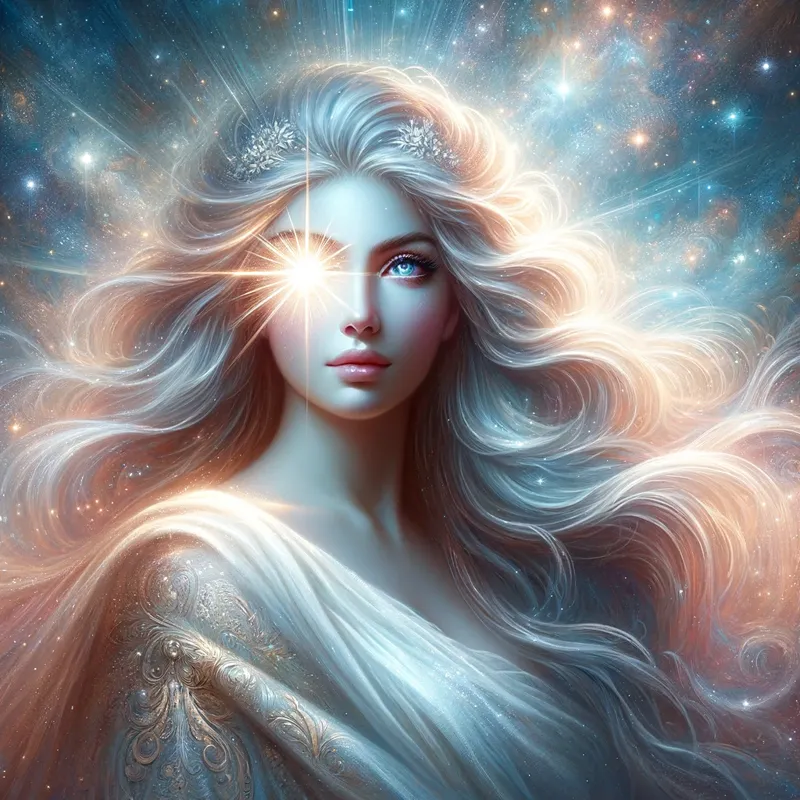
The spell was broken by that light which you carry
In contemporary discussions, Aphrodite is often seen as an emblem of female empowerment and the celebration of love in all its forms. Her enduring appeal lies in her ability to embody the joy, pain, and transformative power of love, making her a fascinating figure for both historical study and personal reflection.

On my kingdom... shine the light of justice...
Aphrodite, with her complex narratives and multifaceted nature, remains a captivating figure in the tapestry of Greek mythology. Her stories and symbols, rich with meaning, continue to resonate, offering insights into the human condition and the eternal dance of love and desire. As we revisit her myths and worship, we are reminded of the enduring power of beauty and love to shape our lives and destinies, echoing the timeless allure of the goddess of love herself.



